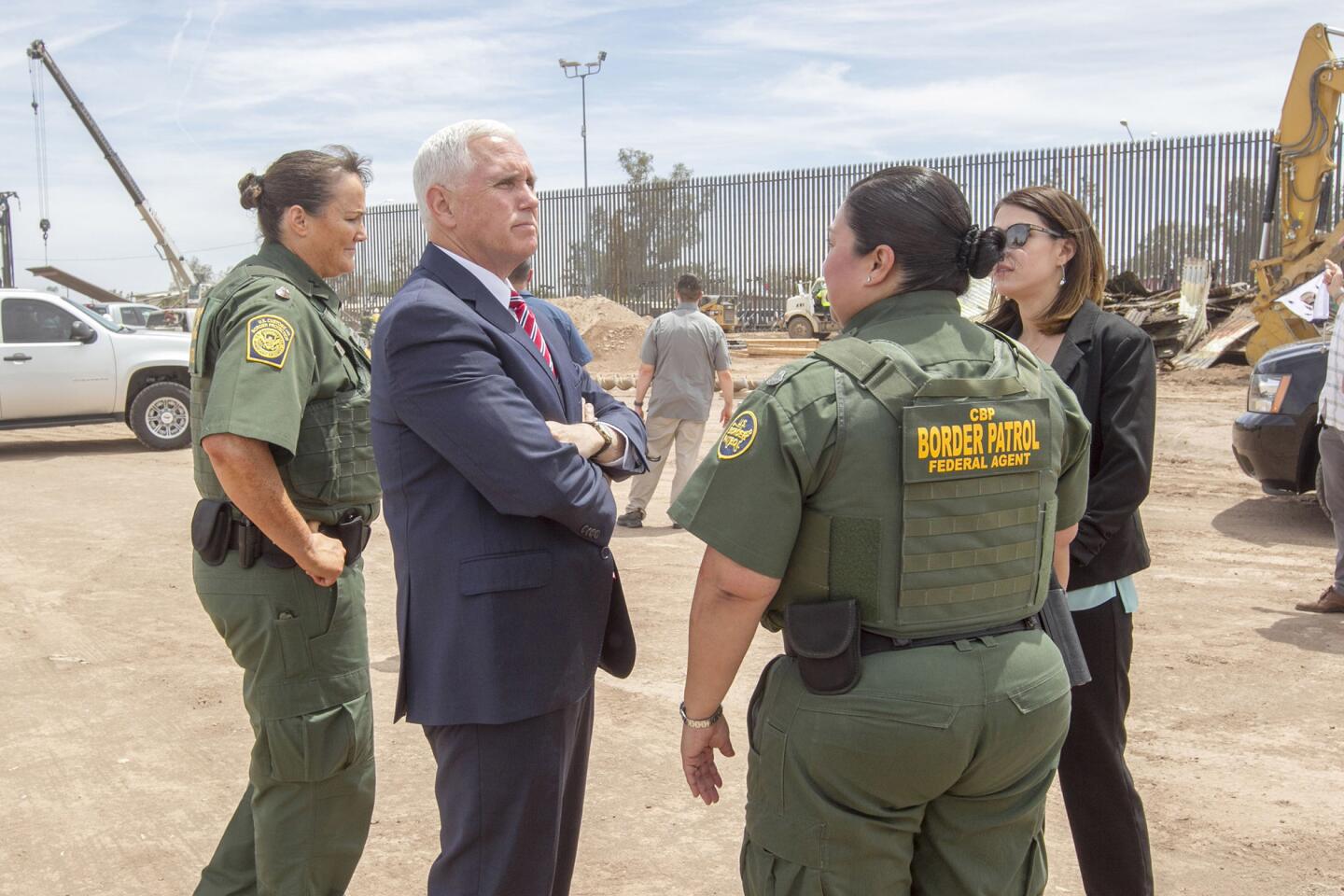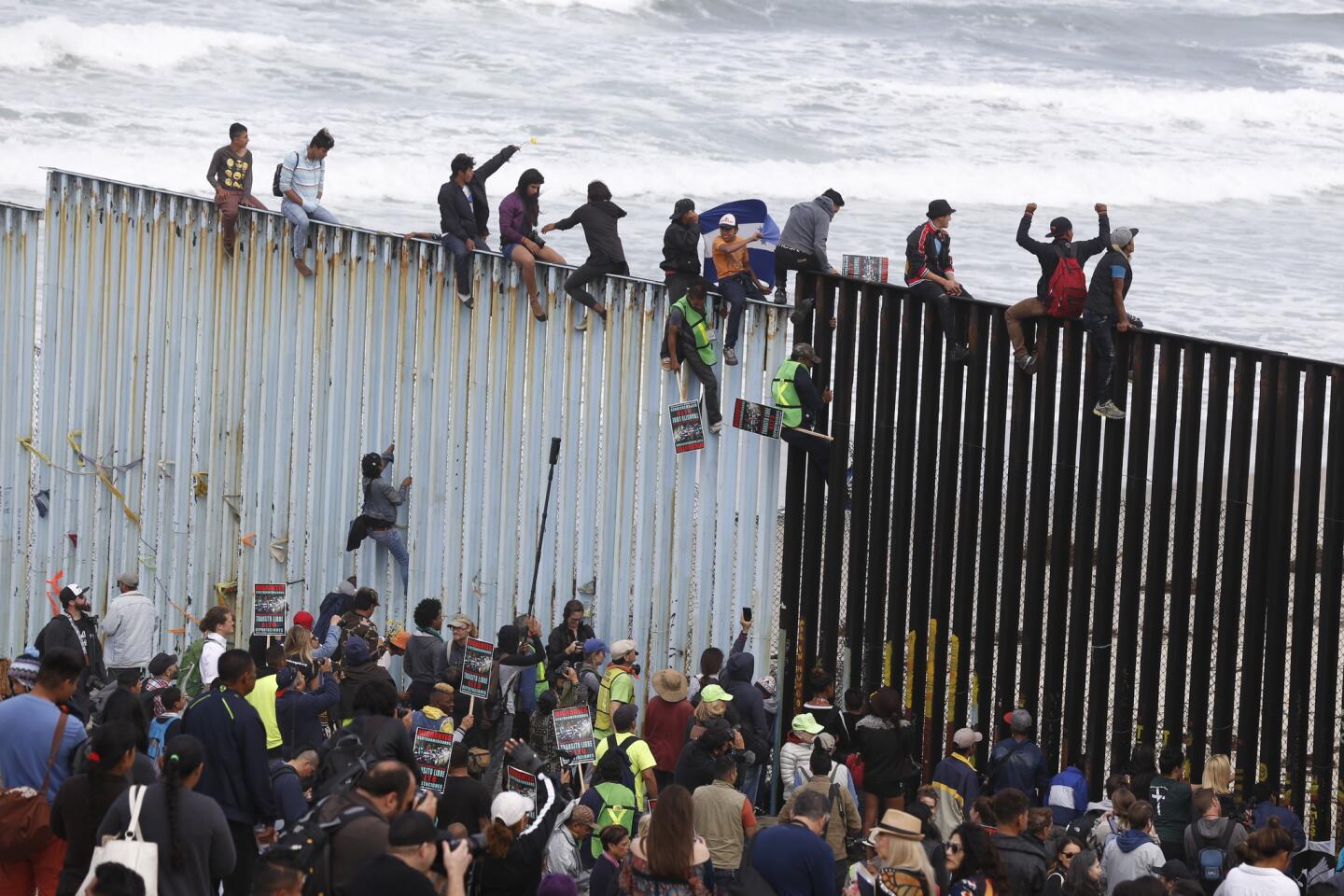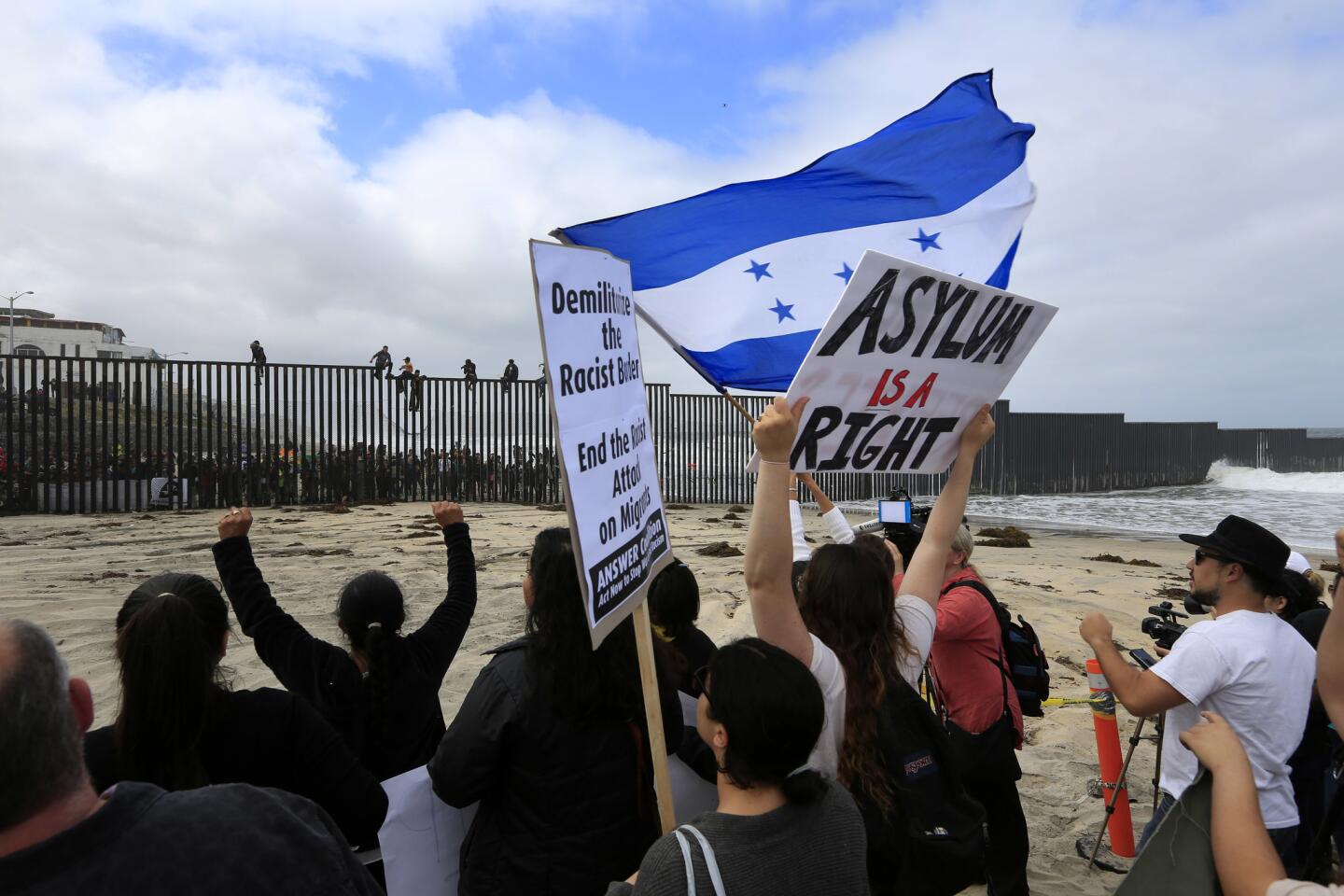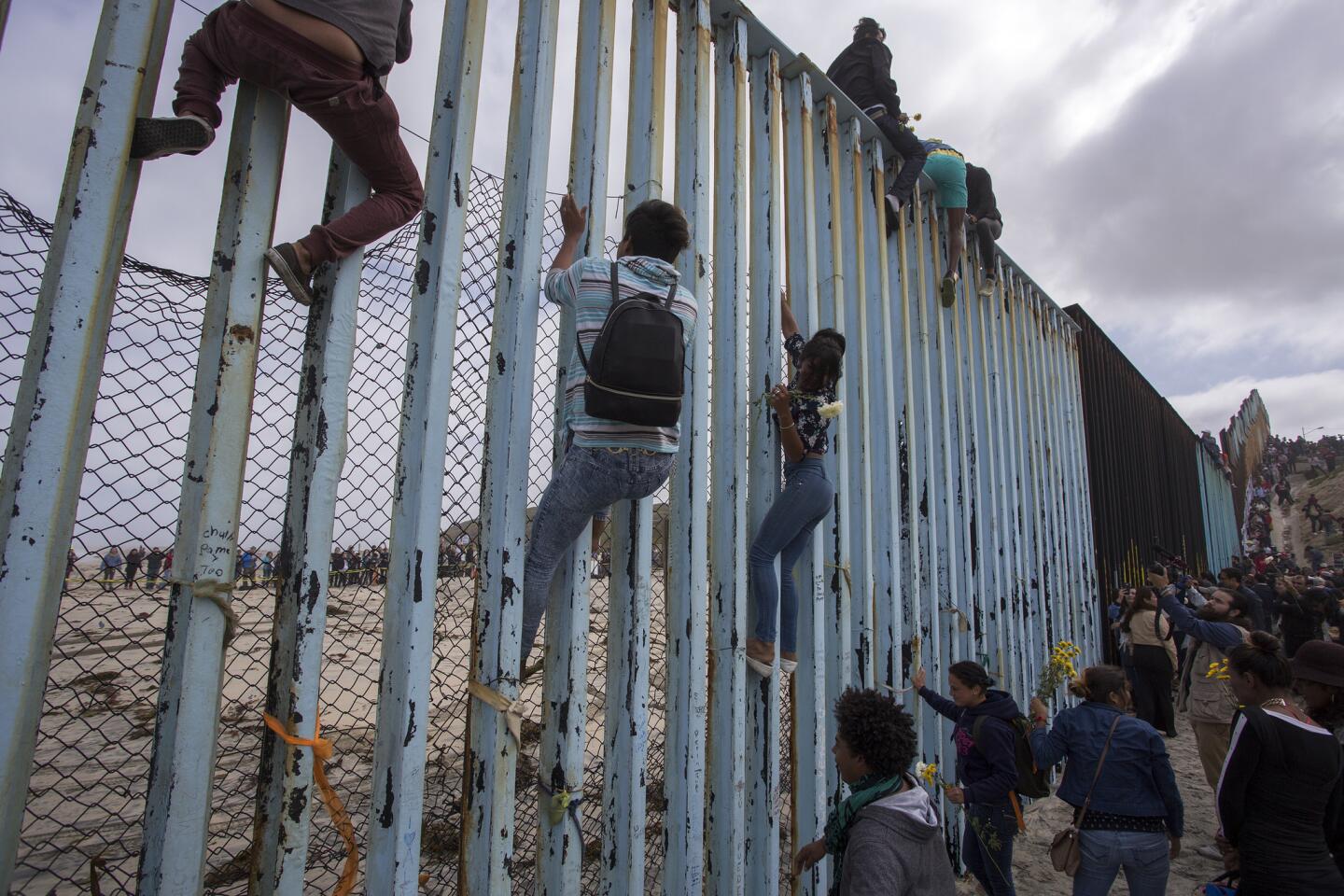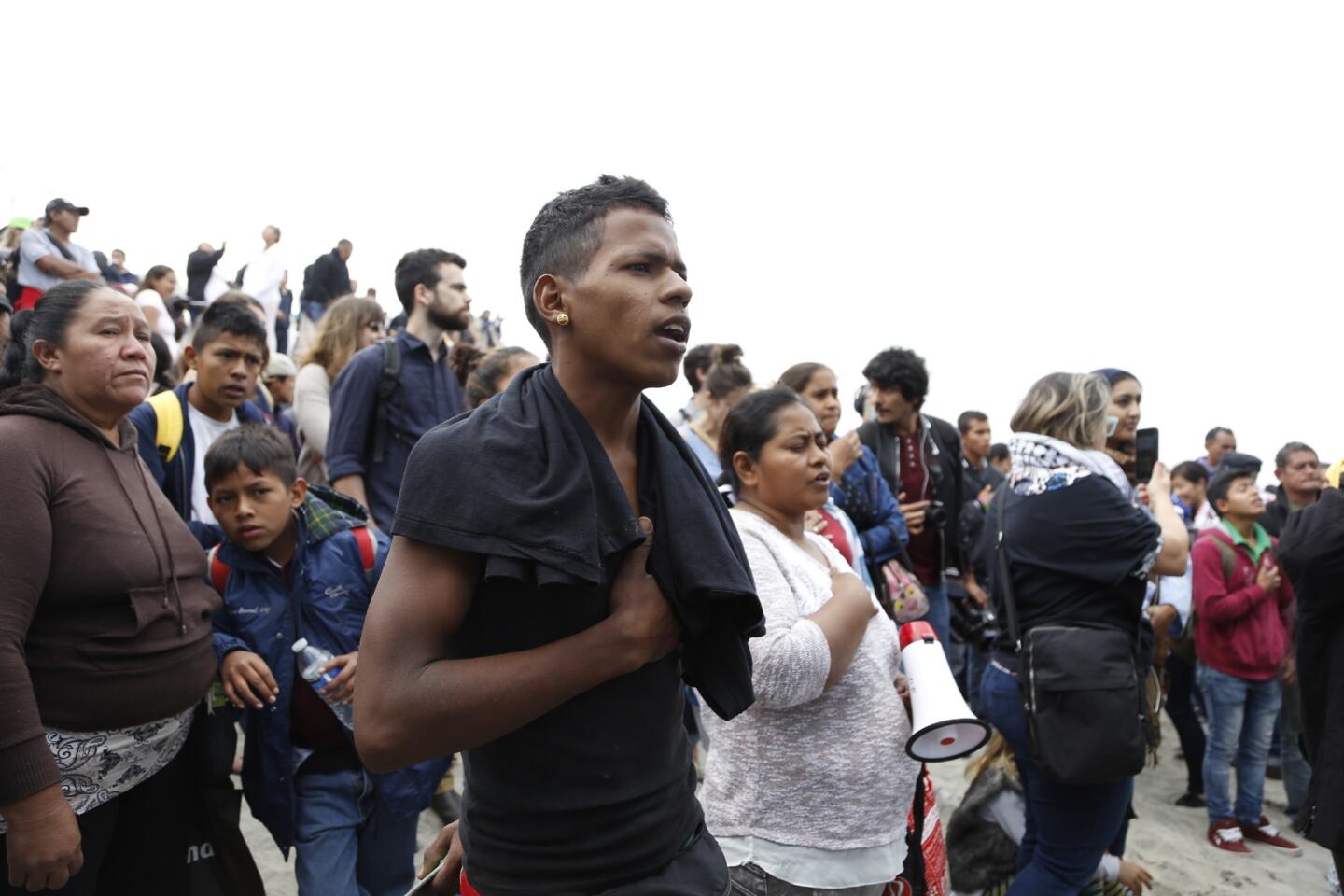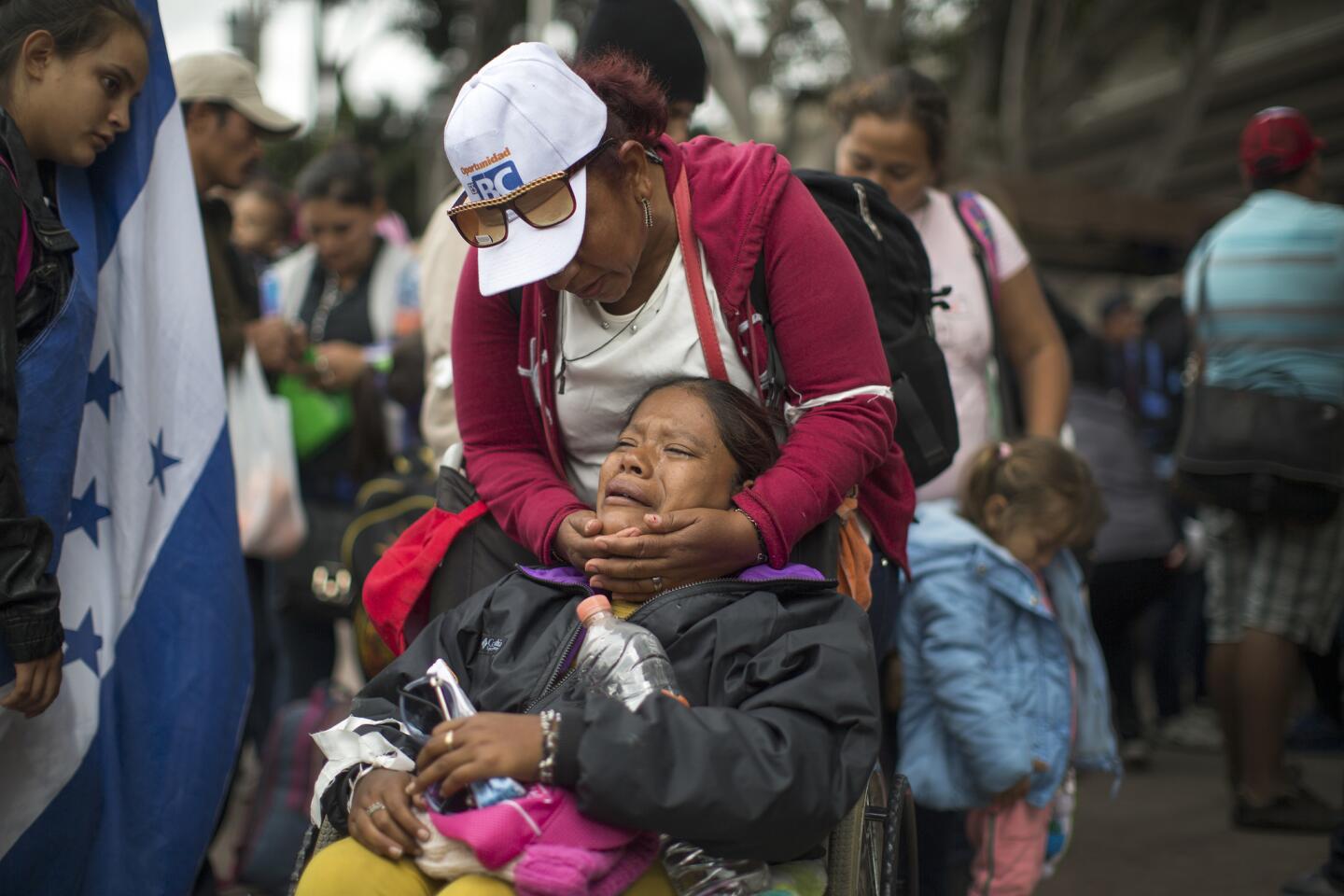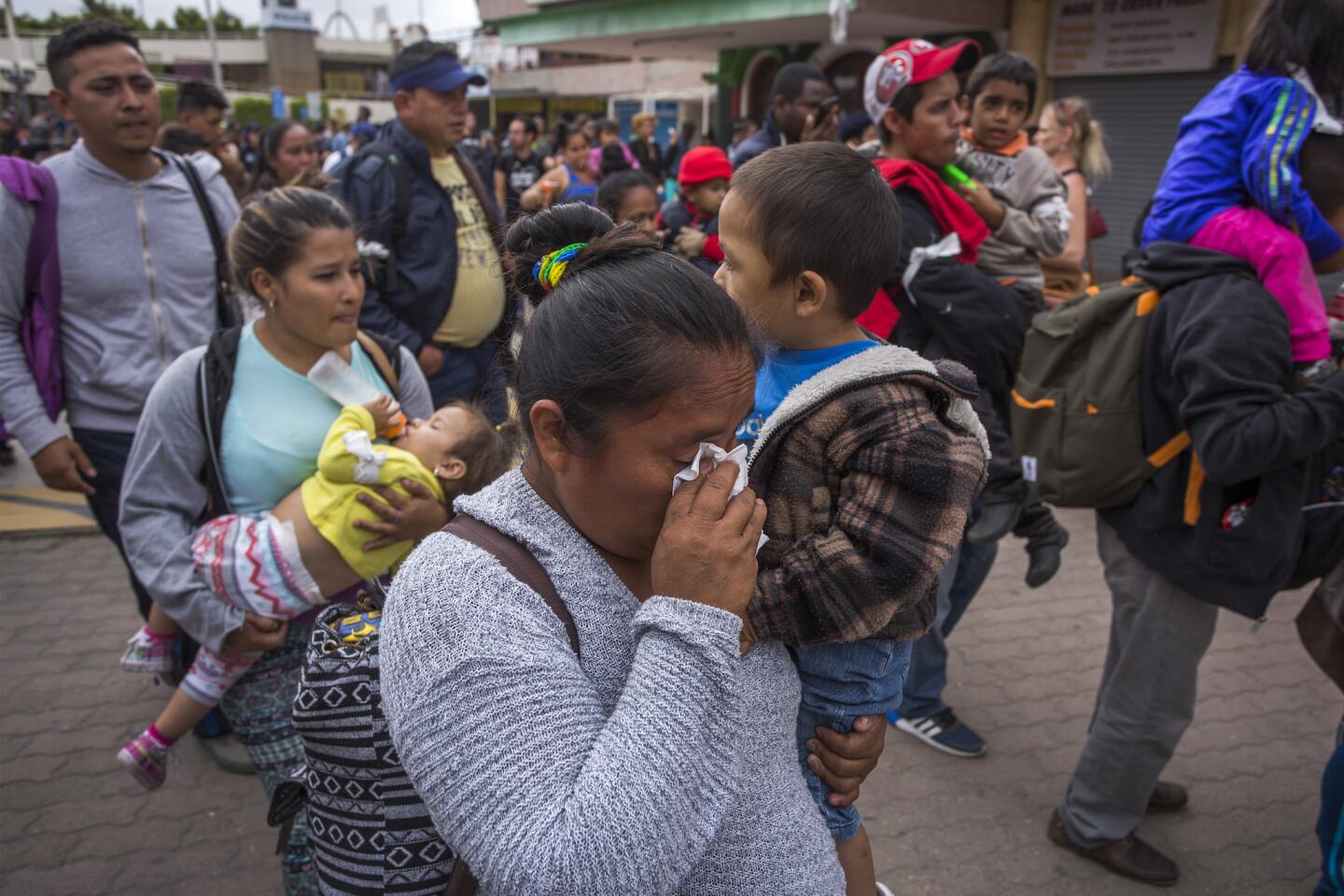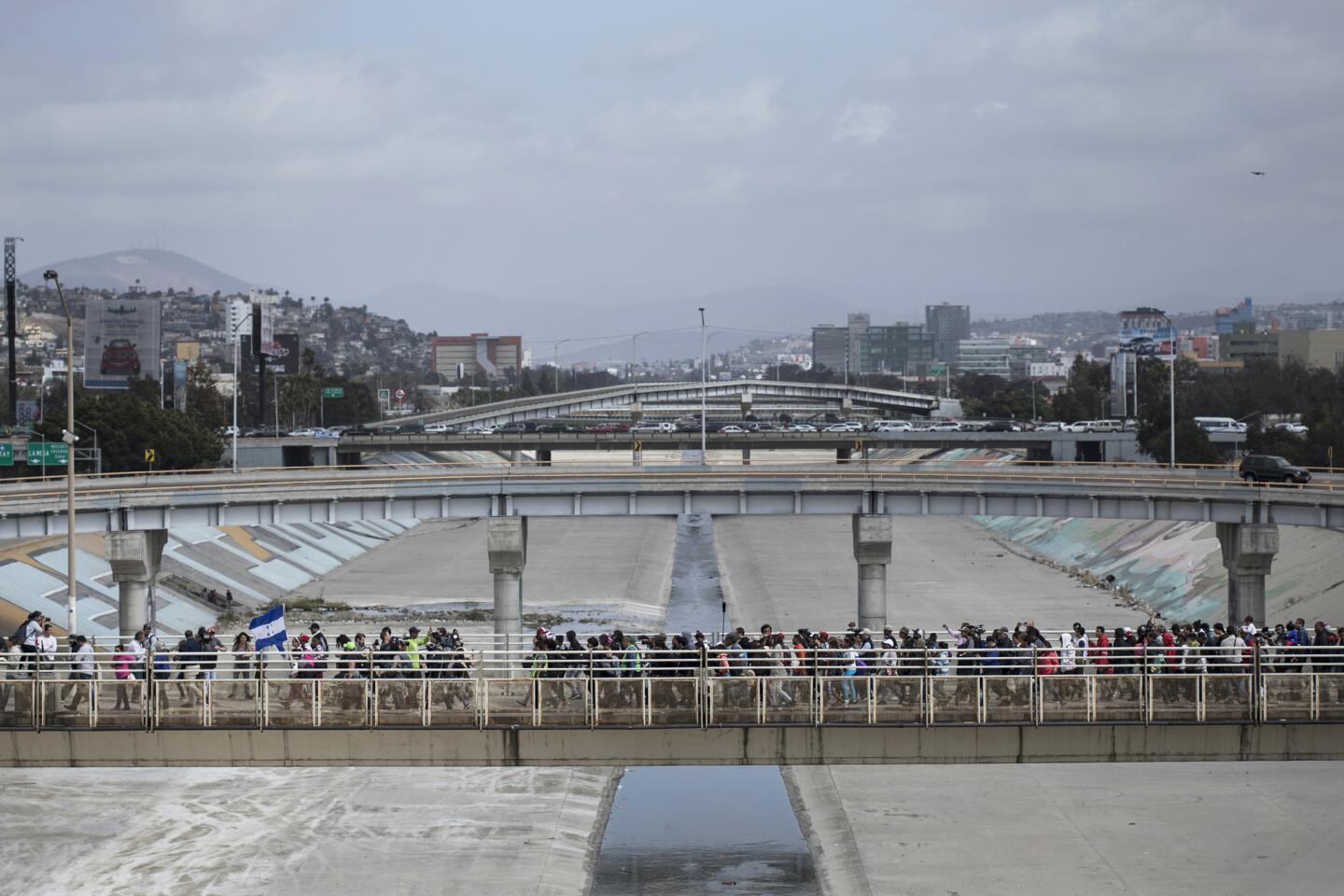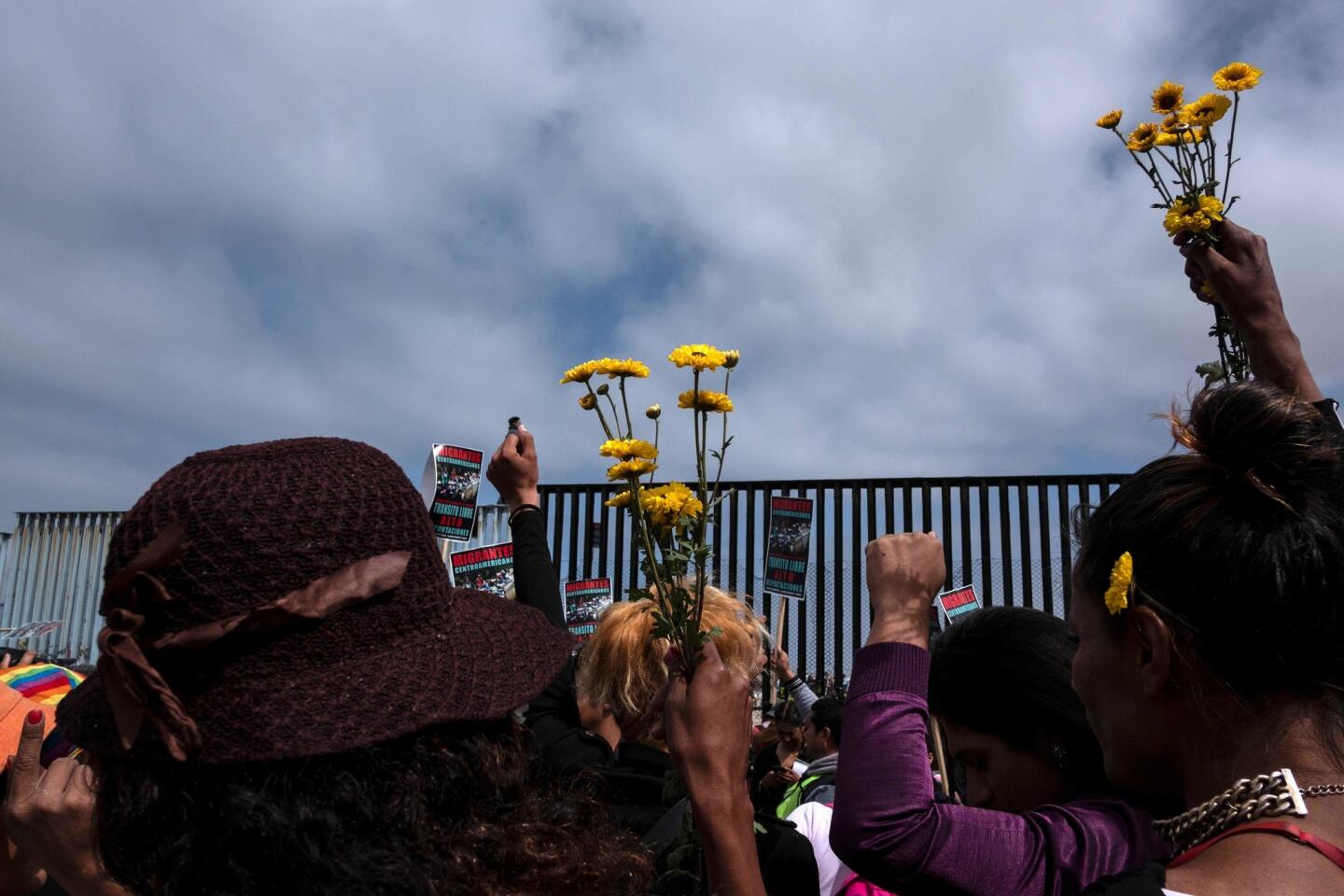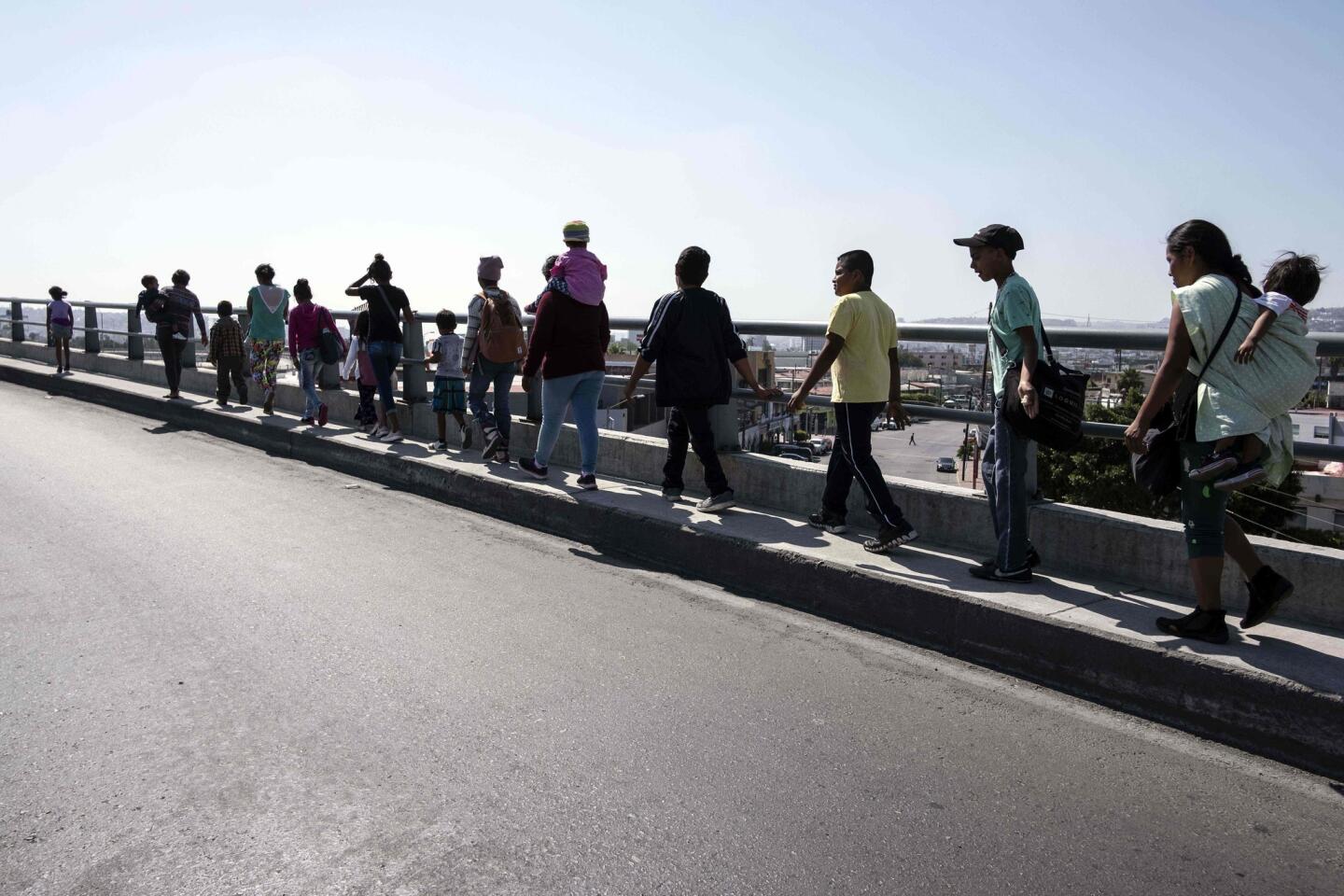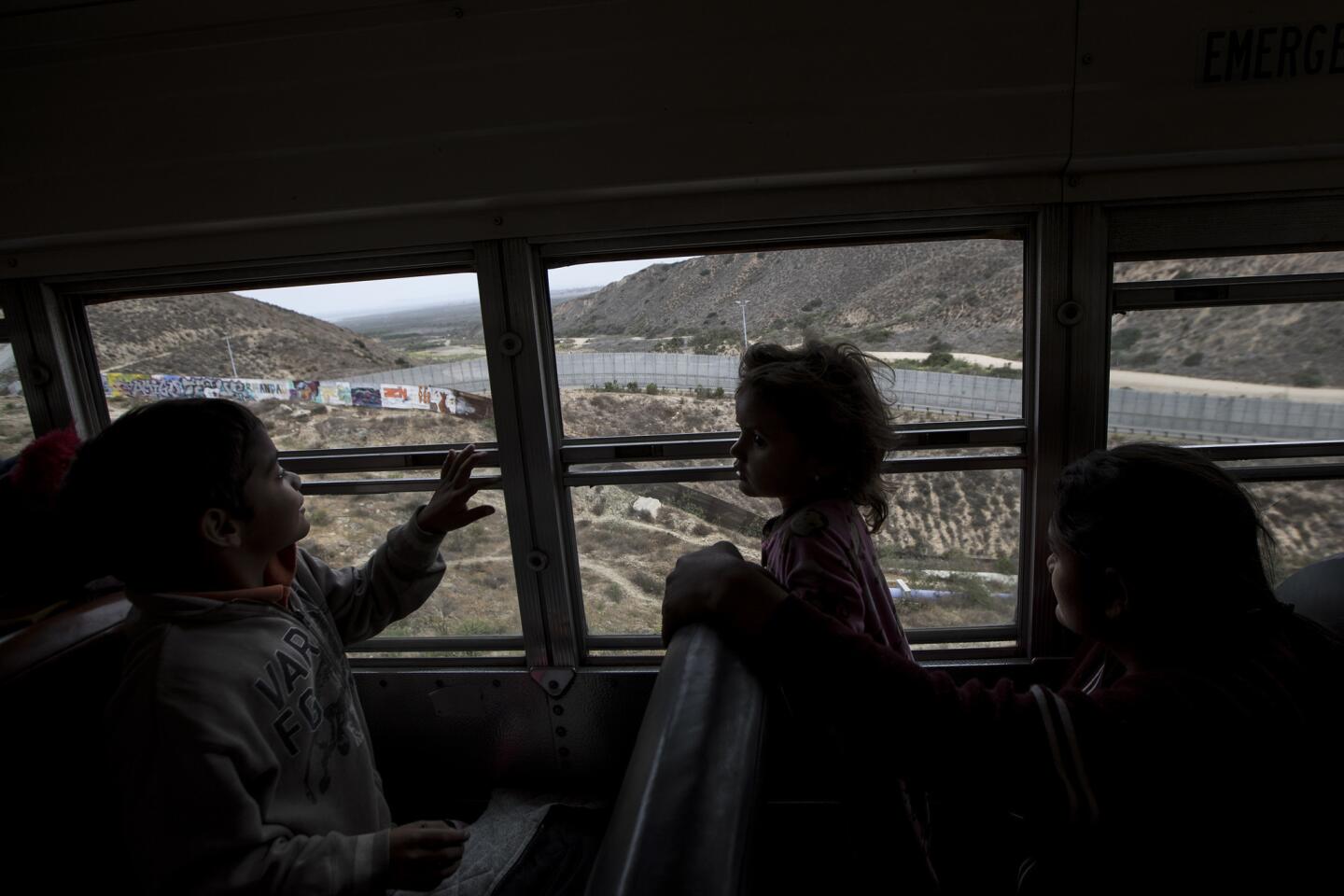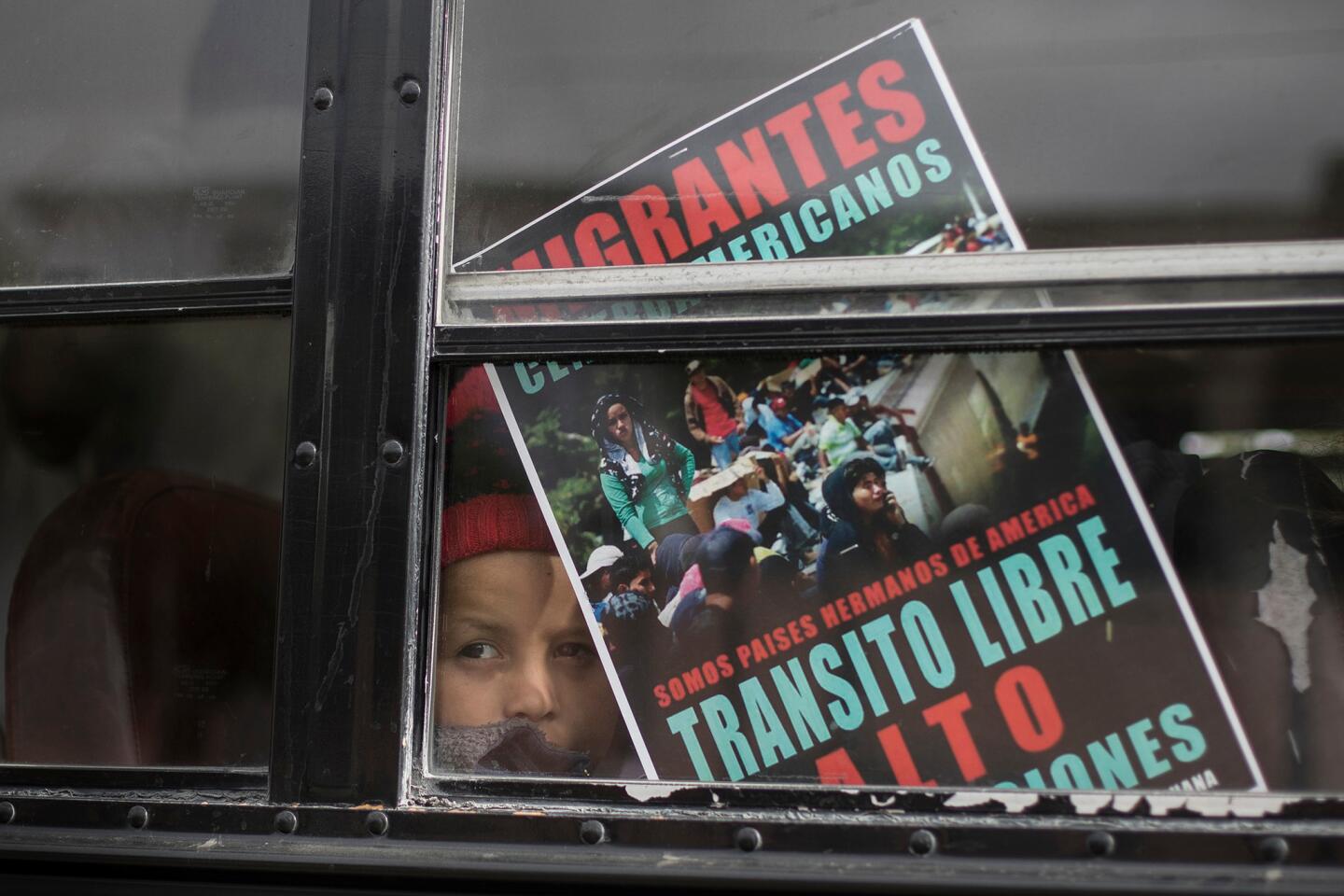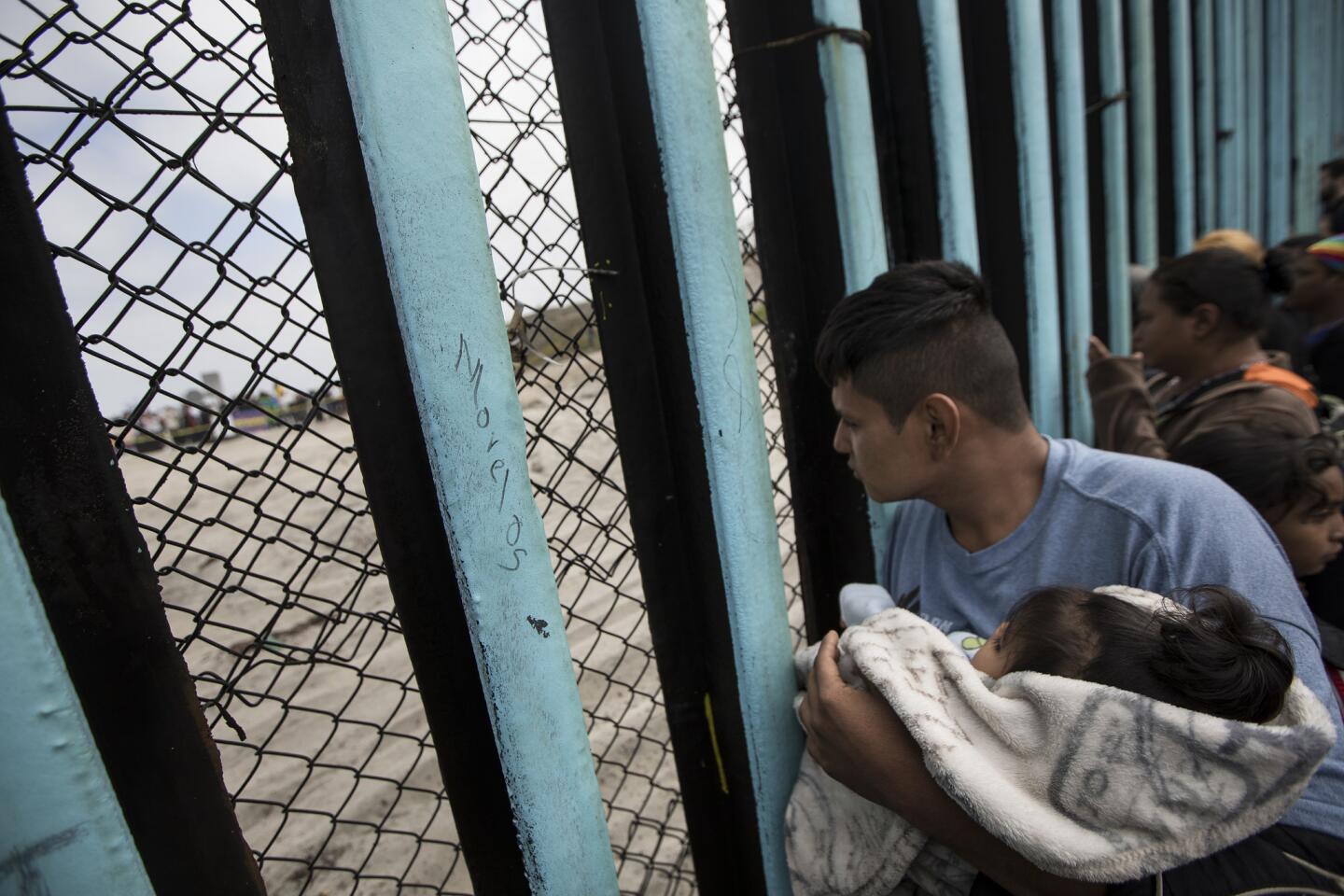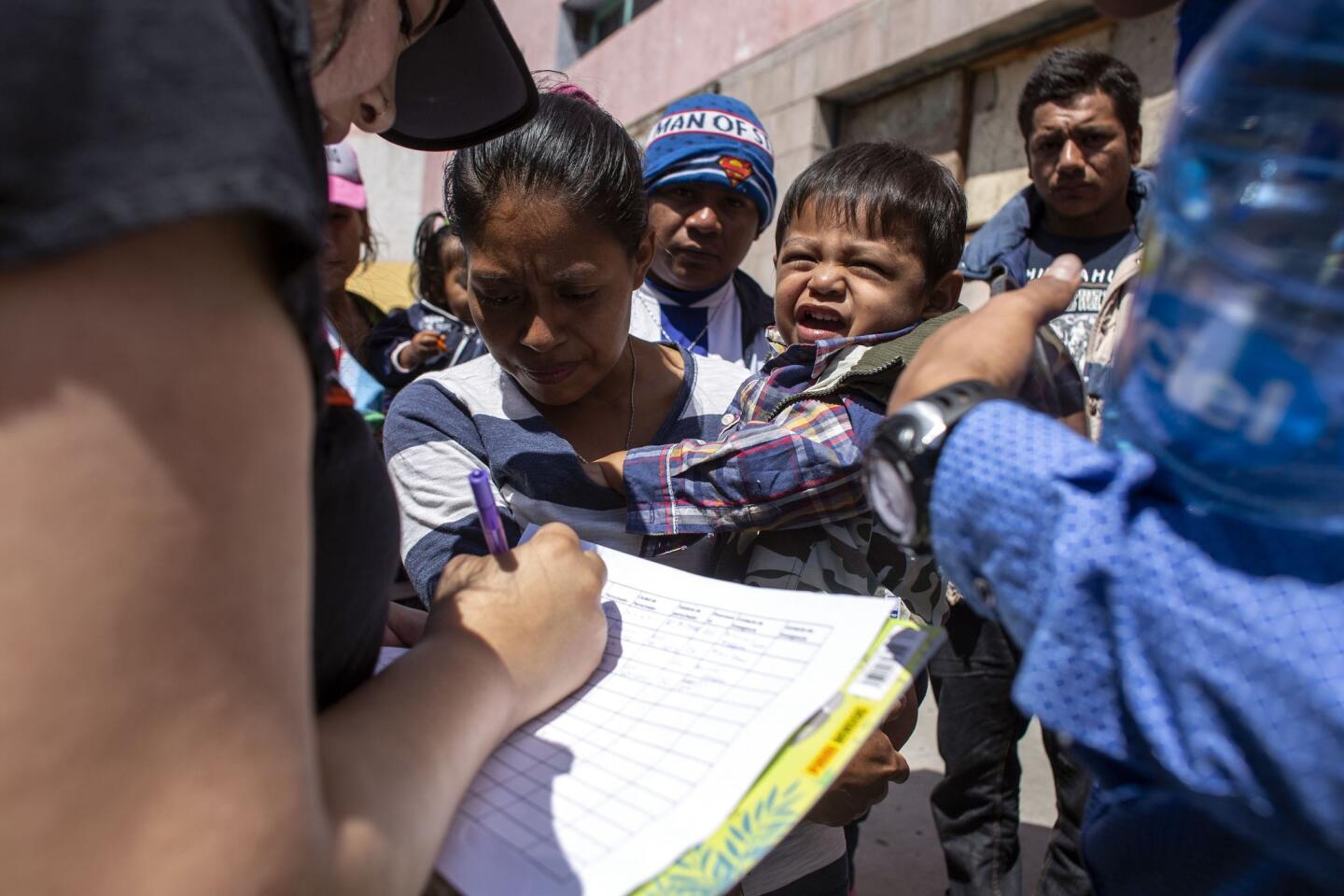Migrants from Central American caravan face a long road to asylum in U.S.
- Share via
Reporting from San Diego — A caravan of asylum seekers from Central America made it to the California border Sunday. Here’s a look at what’s ahead for them:
What do we know about this caravan?
At its largest, the caravan reportedly numbered about 1,200 people, mostly from Central American countries such as Honduras, where many have fled violence that activists attribute, at least in part, to U.S. involvement.
After the Mexican government issued temporary travel documents to members of the caravan, some journeyed ahead of the group to the U.S.-Mexico border to ask for asylum. Others planned to resettle in Mexico.
Those who remained in the group — now about 345 people — arrived by bus this week in Tijuana. Both the Department of Justice and the Department of Homeland Security have pledged to send additional staff to the border to process those claiming asylum as quickly as possible.
What is the general process for asylum seekers?
Generally, when asylum seekers come to the U.S. border, they begin a process that can take months or even years to resolve. Many spend most, if not all, of that time in detention facilities run by private prison companies contracted with Immigration and Customs Enforcement.
They are interviewed and screened by multiple federal agencies, and at the end, they have to prove to judges that their stories meet the requirements under asylum law to be granted protection.
“They can expect to be put through a very confusing process,” said Bardis Vakili, a senior staff attorney at the American Civil Liberties Union who conducts legal orientations at the Imperial Regional Detention Facility. “They can expect to have things not explained to them very well in a language they don’t understand for weeks or months. They can expect to find great difficulty in getting legal help to make their case.”
The Trump administration has called on Congress to end “loopholes” in the asylum process, calling out court rulings and laws that dictate how children and families who arrived together move through the system. Trump also tweeted last week that he’d told Homeland Security Secretary Kirstjen Nielsen not to allow “large caravans” to enter the U.S.
“It is a disgrace. We are the only Country in the World so naive! WALL,” he wrote.
Under U.S. law and international treaties that came after the Holocaust, border officials must allow people who say they’re afraid to return home to submit their claims in the asylum process.
What is the processing like?
Migrants can ask for asylum at any port of entry along the U.S. border. If they come through the new El Chaparral crossing to the PedWest side of the port at San Ysidro, they are stopped by security guards who make sure travelers have documentation before walking through the gate into the U.S. side.
Customs and Border Protection officers take asylum seekers to a processing area for what they call “inadmissibles,” or people who don’t have permission to enter the U.S., where they’re held in temporary cells.
California ports of entry have received 17,610 inadmissibles so far in fiscal 2018, according to data from CBP. At the same point last year, 21,180 inadmissibles had arrived. The agency does not specify how many of them sought asylum.
In the processing area, officers interview the migrants. During the interview, officers are required to ask if they are afraid of going home.
If people express fear of returning to their countries, border officials notify ICE officers, who look for detention bed space to house the arrivals. People who present at the border in San Diego often go to Otay Mesa Detention Center, but if there is no room, they also go to Adelanto Detention Facility, Imperial Regional Detention Facility or farther away.
Asylum seekers wait in detention for interviews with officers from U.S. Citizenship and Immigration Services who are specially trained in evaluating cases under asylum law. Those interviews last about two hours and are usually conducted by phone.
Some detention facilities have asylum officers stationed in them, particularly those that house families, because children are not allowed to be detained beyond 20 days.
Unaccompanied children go through a slightly different process. Asylum officers interview them in person and make the first determination of whether they get asylum. If the officer does not grant asylum, then the child tries again in immigration court.
What does the law say?
Under asylum law, an individual must have suffered persecution or fear suffering persecution because of race, religion, nationality, political opinion or membership in a particular social group.
The “because of” is important — even if the person faces legitimate death threats at home, that person might not win an asylum case if he or she cannot show it is for one of these reasons. (There are other types of protections that have different requirements, such as the United Nations Convention against Torture, that people can ask for as well.)
How this part of the law applies to Central Americans fleeing gang violence, in particular, is still up for legal debate and has evolved over time.
Asylum officers look for whether applicants’ stories are consistent, detailed and plausible based on country conditions, and they run security checks in a variety of government databases.
They check for histories that could bar an applicant from asylum, such as war crimes, persecuting others or other particularly violent or serious crimes.
Supervisors review every credible-fear decision before it’s sent to the asylum seeker.
For asylum officers, it’s a high-pressure situation, said Michael Knowles, president of the local immigration officers union.
“The outcome of an officer’s decision is very consequential. For the person granted asylum, it is a new lease on life, a chance to recover after having lost everything. For the failed asylum seeker, it’s not just, ‘Oh darn, I didn’t get my visa,’ but, ‘Oh darn, I’m going to have to go back to the place I ran away from,’ ” Knowles said.
“There’s also the high stakes of national security,” he said. “By carefully adjudicating these cases, we ensure the integrity of the program.”
The union would like to see more resources and more officers hired, especially with pressure to clear the backlog while adding more security checks. The union has also been critical of reports that some asylum seekers are turned back at the border.
“If they’re coming to seek asylum, they need to be given due process,” Knowles said. “We shouldn’t be impeded from doing our job, and those applicants should not be impeded from having their cases heard.”
People who are not found to have credible fear can have that decision reviewed by an immigration judge.
After someone gets a positive credible-fear finding, he or she receives a “Notice to Appear,” a document that schedules that person for immigration court.
The person at this point can request to be released from detention. Those who are released may be required to pay a bond or wear an ankle monitor. Under the Trump administration, most remain in custody, and even under the Obama administration, many asylum seekers spent the entire process locked up.
At the first hearing with an immigration judge, the asylum seeker receives an asylum application as well as a list of free and low-cost attorneys.
kate.morrissey@sduniontribune.com
Morrissey writes for the San Diego Union-Tribune.
More to Read
Sign up for Essential California
The most important California stories and recommendations in your inbox every morning.
You may occasionally receive promotional content from the Los Angeles Times.
